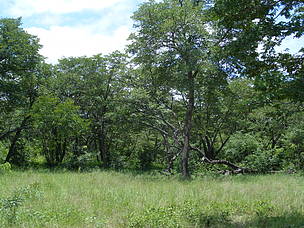Hwange Sanyati Biological Corridor Project

by
Hwange Sanyati Biological Corridor Project
Introduction
The Hwange Sanyati Biodiversity Corridor (HSBC) project covers an area of 5.7 million ha in north western Zimbabwe and falls within the Kavango-Zambezi (KAZA) Trans-frontier Conservation Area (TFCA). It is a $6.4 million project being funded by the Global Environment Facility (GEF) over 5 years. World Bank is the implementing agency for the project, WWF is the activities implementing entity and the Ministry of Environment and Natural Resources Management is the coordinating authority. Key project partners are: Parks and Wildlife Management Authority; CAMPFIRE Association; Environmental Management Agency; and the Forestry Commission.
The project seeks to address the following corridor wide challenges:
• inadequate water supplies for wildlife;
• destructive wild fires;
• poaching of wildlife and timber;
• human wildlife conflicts;
• land degradation;
• limited livelihood options;
• food insecurity; and
• inadequate institutional capacities to address environmental and livelihood challenges.
Objective
The overall objective of the project is to provide tools for the sustainable management of the corridor.
Focal areas
An integrated landscape/ecosystems approach is used to address the multiple GEF focal areas in the project which are:
- biodiversity;
- climate change;
- land degradation;
- and sustainable forest management/REDD+.
Project Components
The project has the following three closely inter-related components:
- Improving Protected Area (PA) management effectiveness: The component will improve PA management in the Hwange National Park and the livelihood of communities involved in the stewardship of natural resources in the buffer area of the Park through pilot livelihood projects;
- Developing tools that address land degradation and deforestation across the corridor and piloting rehabilitation measures in the Sanyati catchment; and,
- Supporting human and institutional capacity improvement on climate change; strengthening local environmental committees within the corridor; and providing training, national awareness building and outreach activities as part of a comprehensive communication strategy.
Recommended Posts
THE NATIONAL FOREST POLICY
April 26, 2024
Carbon Trading in Zimbabwe
October 03, 2023
Tree of the Year 2023
September 27, 2023
